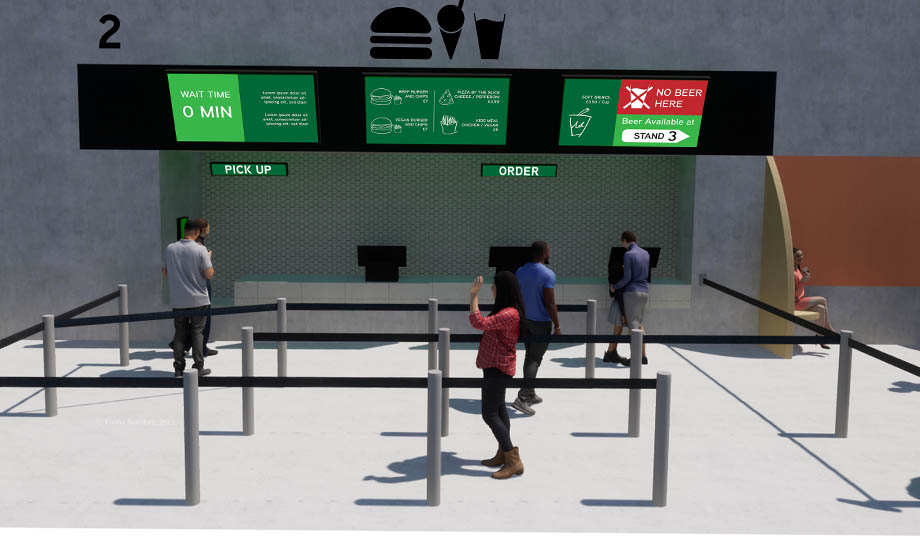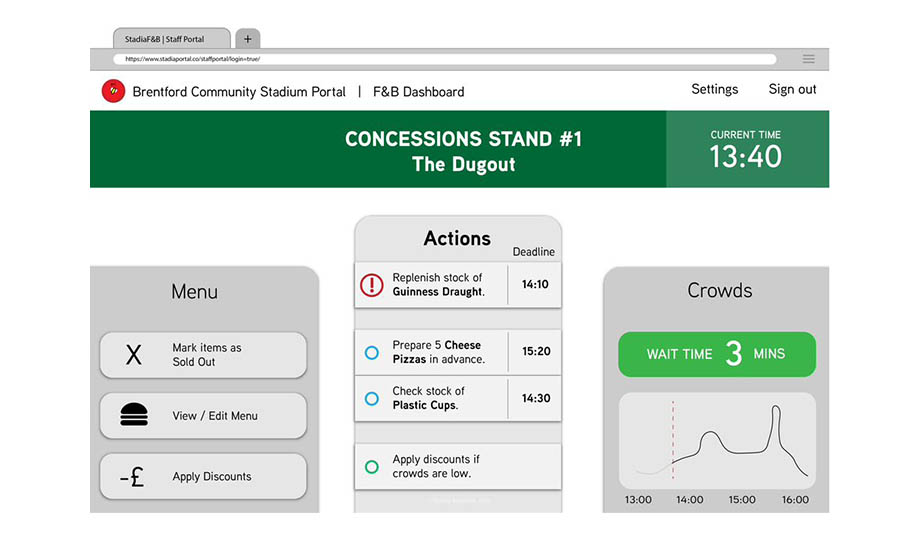How fans can hack wait time for stadium snacks
Sports fans who’ve had it with long lines for food and drink when they go to the game could stress less, with a clever little system that uses logic to flag up the best place to queue for a shorter wait.
Most fans don’t expect silver service when they go to grab their pie, burger or sausage roll to munch while standing around before kick-off. But whatever sort of performance your team puts in, waiting ages to get the beers and burgers in really is a total waste of time.
Forty-five per cent of stadium spectators said they quit a queue because they were sick of waiting, showed a 2016 study by data crunchers Oracle, and they’d fork out an extra tenner if the wait time was halved.
The 'Wait-Less' Crowd Flow Prediction system uses event data to predict surges in demand at kiosks. Catering staff can check a dashboard web-app telling them when it’s a good idea to make menu items in advance. And thirsty fans can see how long they’ll wait to get served at each counter.
Football fan and design graduate Emma Bashford, 22, had the idea from going to watch her team, West Brom. “I have been to football matches with my family for most of my life, and the concessions experience has not much changed since then,” said Emma. “Fans are clearly frustrated with slow service, which means stadia operators are losing out on concessions sales.”
Certain counters tend to pull bigger crowds, with some much busier than others, often because of bad signs. It’s a similar story with other sports. At Brentford stadium for London Irish vs Gloucester Rugby, it took Emma and four friends a yawnsome 25 minutes to get five drinks. Some counters were sold out and they didn’t know which others still had them.


The Wait-Less system could cut peak waiting times from 30 minutes to about 10 minutes and aims to keep waiting times under 5 minutes on average.
Creating the system for her product design course at Brunel University London, Emma looked to queue psychology to work out what match-day punters will do. Because snacks take longer than booze to serve, Wait-Less prompts people to join a 'drinks-only' queue that shifts faster than 'food and drinks' queues, so everyone gets served faster. This plan is popular at tourist hotspots like theme parks, which feed thousands every day.
The system uses stadium stats such as the number of punters there that moment and digital signs to show which outlets are busy, how long people will wait and where to go that is less busy. AI-powered programs predict which areas of the stadium will be most crowded at certain times. This way, staff get ready for crowd surges, so fans get fed faster and takings don’t take a dive.
"Emma Bashford's Wait-less System has a strong commercial application using on-the-ground research in Brentford Stadium, among other sites, to validate it,” said Brunel Design School’s Philip Phelan. Philip, who lectures in human factors, added: “I have encouraged Emma to pursue this idea further, with a view to commercialising it."